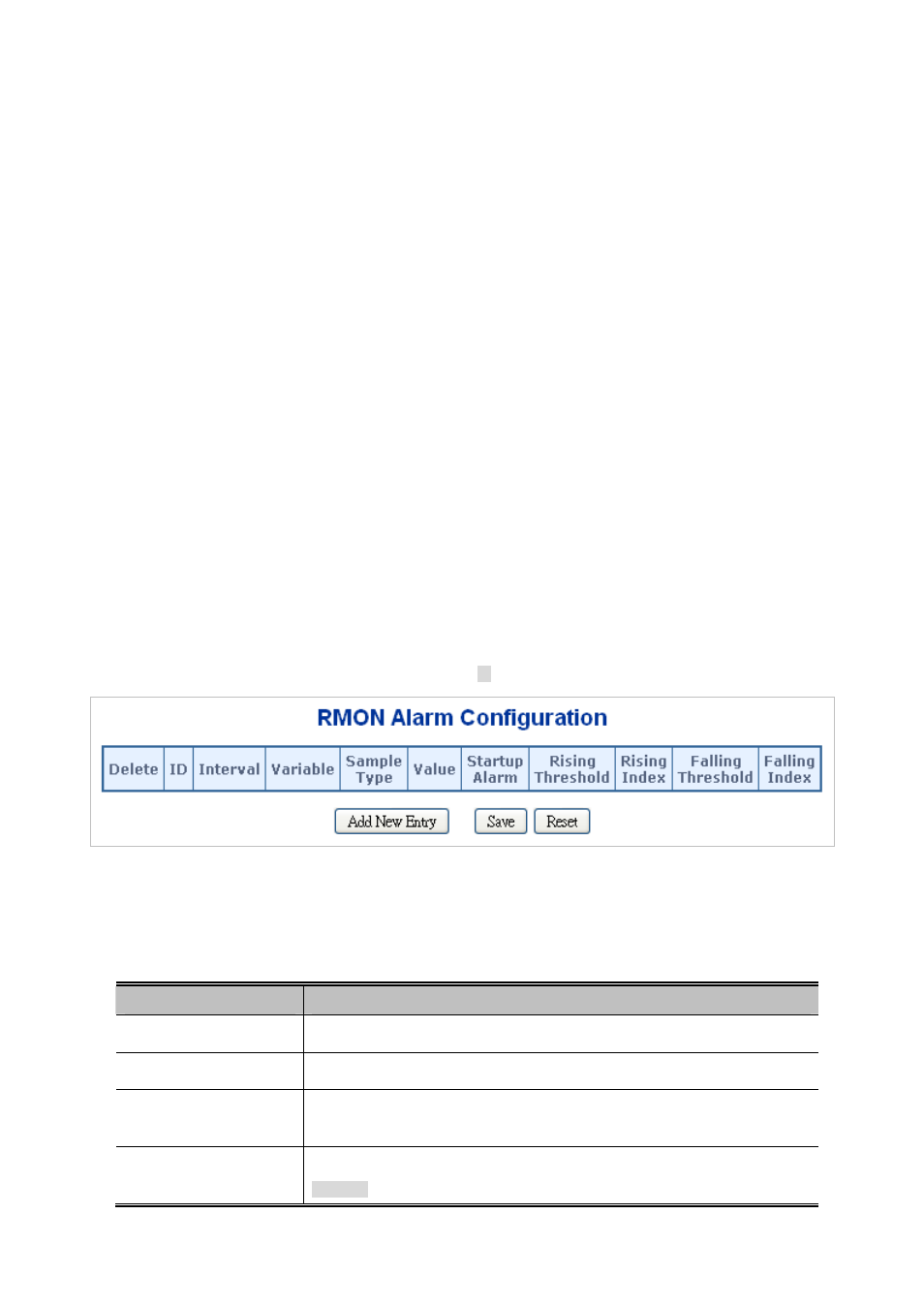18 rmon, 1 rmon alarm configuration – PLANET XGSW-28040 User Manual
Page 321

User’s Manual of XGSW-28040
4.18 RMON
RMON is the most important expansion of the standard SNMP. RMON is a set of MIB definitions, used to define standard
network monitor functions and interfaces, enabling the communication between SNMP management terminals and remote
monitors. RMON provides a highly efficient method to monitor actions inside the subnets.
MID of RMON consists of 10 groups. The switch supports the most frequently used group 1, 2, 3 and 9:
Statistics:
Maintain basic usage and error statistics for each subnet monitored by the Agent.
History:
Record periodical statistic samples available from Statistics.
Alarm:
Allow management console users to set any count or integer for sample intervals and alert thresholds for
RMON Agent records.
Event:
A list of all events generated by RMON Agent.
Alarm depends on the implementation of Event. Statistics and History display some current or history subnet statistics. Alarm
and Event provide a method to monitor any integer data change in the network, and provide some alerts upon abnormal events
(sending Trap or record in logs).
4.18.1 RMON Alarm Configuration
Configure RMON Alarm table on this page. The entry index key is ID.; screen in
Figure 4-18-1
appears.
Figure 4-18-1
RMON Alarm configuration page screenshot
The page includes the following fields:
Object
Description
Delete
Check to delete the entry. It will be deleted during the next save.
ID
Indicates the index of the entry. The range is from 1 to 65535.
Interval
Indicates the interval in seconds for sampling and comparing the rising and
falling threshold. The range is from 1 to 2^31-1.
Varoable
Indicates the particular variable to be sampled, the possible variables are:
InOctets
: The total number of octets received on the interface, including framing
321